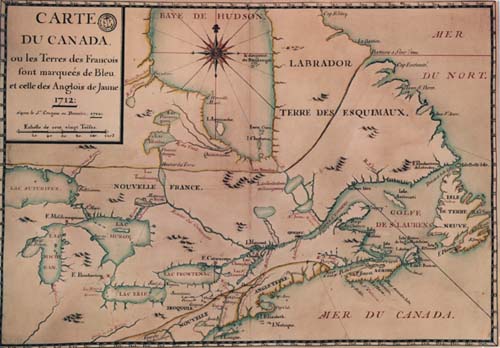Territorial Consequences
The most important territorial consequence for New France was
|
 |
Over a period of one hundred fifty years New France's territory spread from a tiny colony on the St. Lawrence River to one that extended from the Atlantic to the Prairies, and from the lands surrounding Hudson Bay to the Gulf of Mexico. The demands of the fur trade and missionary zeal led to the exploration of the continent by explorers such as Jolliet and Marquette, LaVérendrye, LaSalle, Father Albanel and Radisson.
Military Consequences
The fur trade brought about a series of
|
 |
The expansion of New France's territory also brought about the
- encirclement of the English colonies.
Try the following questions on the Topic 3: Territorial and Military Consequences